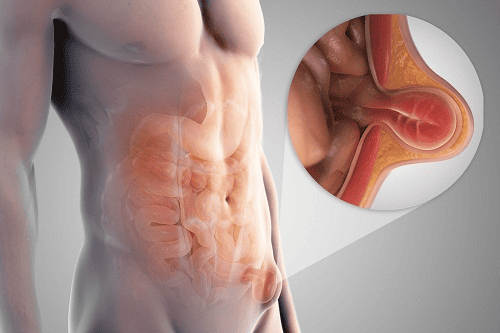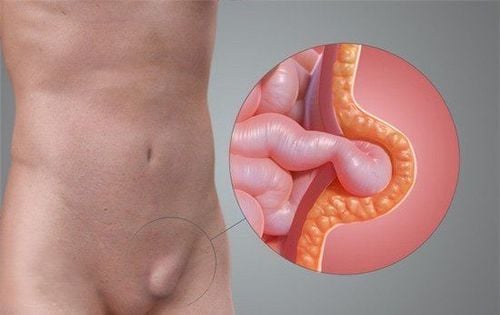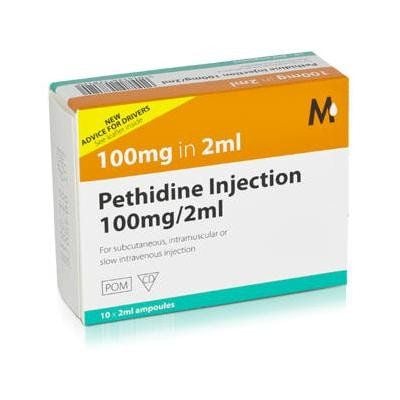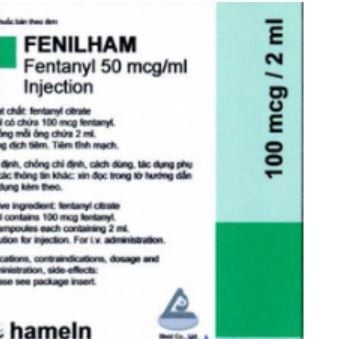This is an automatically translated article.
The article was professionally consulted by Specialist Doctor II To Van Thai - Emergency Medicine Doctor - Emergency Resuscitation Department - Vinmec Hai Phong International General Hospital.Lumbar disc herniation is a fairly common disease in adults. Spinal anesthesia is an anesthetic method used when patients with lumbar disc herniation have indications for surgery.
1. Surgery to remove the nucleus of lumbar spine hernia
Spinal discs are composed of a mucinous nucleus, annulus, and a cartilage apex. The disc has elastic ability to help reduce vibrations to the vertebral bodies. Spinal disc herniation is a condition in which the glue nucleus of the disc breaks out of its normal position in the annulus, compressing the nerve roots and spinal cord. The two most common locations of herniated discs are in the cervical and lumbar vertebrae.Lumbar disc herniation is a fairly common disease in adults, especially in the 30-50 age group. The location of herniation is usually at L4-L5 and S1 because these two discs are the main motor hinges of the spine. There are many causes of herniated discs in the lumbar spine such as trauma, playing high-impact sports, obesity, which increases pressure on the disc, aging, osteoarthritis, and spinal degeneration. In the elderly,... Some people, due to the characteristics of their work, have to sit in one place for many hours, this situation lasting for many years will also increase the risk of lumbar spine herniation.
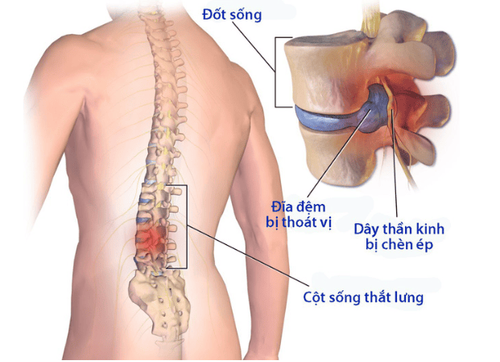
Thoát vị đĩa đệm cột sống thắt lưng có thể xảy ra do chấn thương
Regarding the treatment of disc herniation in the lumbar spine, medical treatment with NSAIDs, anti-spasmodic drugs, corticosteroids and rehabilitation is applied when the disc capsule has not been torn. The purpose of treatment is to help patients relieve pain, restore motor function, create conditions to help herniated disc shrink, and reduce nerve compression. Lumbar disc herniation is indicated for surgery when:
Medical treatment for 5-8 weeks without progress. Herniated lumbar spine causes acute nerve compression Herniated disc causes capsular tear fibrous, migratory herniation In addition, some types of disc herniation in the lumbar spine require urgent surgical intervention such as: disc herniation causing excessive pain, disc herniation causing paralysis or causing cauda equina syndrome. ... Two surgical methods to remove the nucleus pulposus from the lumbar spine are being used commonly today: using microsurgery to remove the nucleus pulposus and removing the nucleus pulposus through endoscopy.

Phẫu thuật là một phương pháp điều trị thoát vị đĩa đệm cột sống thắt lưng
2. Spinal anesthesia for surgery to remove the nucleus of lumbar spine hernia
2.1. Indications for spinal anesthesia for surgery to remove the nucleus of lumbar spine hernia
Spinal anesthesia is a technique of regional anesthesia performed by injecting local anesthetic into the subarachnoid space to temporarily inhibit nerve conduction through the spinal cord to meet the requirements of surgical anesthesia and analgesia. Spinal anesthesia is an anesthetic method used when patients with lumbar disc herniation have indications for surgery.Spinal anesthesia is not performed in the following cases:
The patient refuses to perform the method; The patient is allergic to the anesthetic or has an infection in the area where the needle is injected. The patient has insufficient circulatory volume to compensate, shock; severe coagulopathy or inadequately discontinuing anticoagulants. Patients with constricted mitral stenosis, constricted aortic valve or increased intracranial pressure.
2.2. Preparing to perform spinal anesthesia in surgery to remove the nucleus of lumbar spine hernia
Spinal anesthesia will be performed by doctors and nurses specializing in anesthesiology. Necessary tools and equipment for anesthesia and anesthetics include:Syringes and needles of all sizes, gloves, sterile gauze, pince, antiseptic alcohol, sterile hole towels, spinal anesthesia needles of all sizes. Local anesthetics: bupivacaine, levobupivacaine, ropivacaine,... can be combined with morphine drugs (morphine from 100-300mcg; fentanyl 25-50 mcg; sulfentanil 2.5-5mcg,...). The dose of the drug is calculated by the doctor based on the patient's weight, height, and physical condition, in which: Bupivacaine is used in doses of 5-12mg; Levobupivacaine from 5-12mg; Ropivacaine dose from 5-20mg,... Reduce dose for patients older than 60 years, anemia, pregnancy. In addition, to ensure safety during anesthesia and surgery, it is necessary to have resuscitation facilities (oxygen source, Ambu balloon, electric shock machine, suction machine, ..), circulatory resuscitation drugs. (infusion, adrenaline, ephedrine,...) and anticonvulsants (such as barbituric, benzodiazepine, muscle relaxant, intralipid 10-20%,...).
On the patient's side, to prepare for spinal anesthesia, the doctor will examine before surgery, explain to the patient to cooperate when performing. The anesthetic area will be cleaned before surgery. The doctor will assign the patient to use sedation from the night before surgery if necessary.

Thuốc an thần có thể được sử dụng trước khi gây tê tủy sống phẫu thuật
2.3. Steps to perform spinal anesthesia for surgery to remove lumbar spine hernia
To prevent hypotension, the patient will be placed intravenous line, fluid resuscitation at a dose of 5-10ml/kg (for adults). There are two positions commonly used for spinal anesthesia, which are:Sitting position: the patient sits with his back bent, head bowed, chin resting on chest, legs stretched on the operating table or feet resting on a chair. Lying position: the patient lies on his side, back arched, knees close to abdomen, chin resting on chest. Steps of spinal anesthesia for surgery to remove lumbar spine hernia include:
Anesthesiologist (or nurse) wear a hat, mask, wash hands, wear a shirt, and wear sterile gloves . Disinfect the puncture site three times with an antiseptic solution, then cover with a sterile tissue. Midline or lateral anesthesia can be selected. If the anesthetic is in the midline, the doctor will insert the needle into the gap between the two vertebrae, the puncture location will depend on the high or low surgery, usually in the L2-L3 to L4-L5 positions. If anesthesia is applied to the lateral line, the doctor will conduct a needle puncture 1-2cm from the midline, directing the needle in the middle, up, and out.
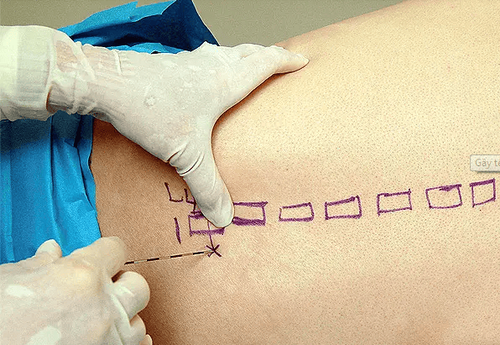
Gây tê tủy sống có thể được thực hiện vào đường giữa hoặc đường bên
3. Possible complications when causing spinal cord to remove lumbar spine hernia
3.1. Drug-induced complications and treatment
New generation anesthetics have high safety, allergic reactions, anaphylaxis rarely occur. However, anaphylaxis is always a reaction that needs to be vigilant, if the patient shows signs of anaphylaxis, the doctor will immediately stop the drug and implement an anti-anaphylactic regimen. If the wrong anesthetic is injected into the blood vessel, causing poisoning, the doctor will immediately stop the anesthetic, use anticonvulsant drugs, perform respiratory and circulatory resuscitation. Intralipid infusion if poisoning with local anesthetics Bupivacaine or Ropivacain.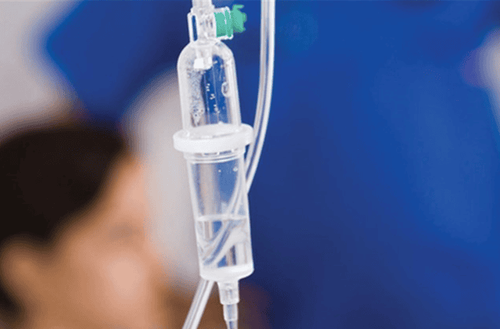
Sốc phản vệ là một tai biến có thể xảy ra do sử dụng thuốc
3.2. Complications due to spinal anesthesia technique and how to manage
Hypotension, bradycardia: Treat with vasopressors (ephedrine, adrenaline,...), atropin and fluid resuscitation. Headache: The patient is kept immobile, full of fluids, pain relievers, and epidural patch with autologous blood (Blood Patch). Nausea and vomiting: The patient's blood pressure is tightly controlled and antiemetic drugs are used. Urinary retention: The doctor will prescribe warm compresses and bladder catheterization if necessary. General spinal anesthesia: If the patient has symptoms of general spinal anesthesia, the entire anesthetic and surgical team will actively perform respiratory and circulatory resuscitation. Other possible complications of spinal anesthesia include hematoma around the spinal cord, spinal cord injury, cauda equine syndrome, meningoencephalitis, etc. Depending on the situation, the doctor will conduct a consultation. , probe for appropriate treatment. If spinal anesthesia fails, the anesthesiology team will switch to another method of anesthesia.Spinal anesthesia is a routine anesthetic technique performed at Vinmec International General Hospital. Accordingly, the spinal anesthesia process at Vinmec is carried out methodically and according to the standards of the procedure by a team of highly skilled doctors and modern machinery. As a result, complications after anesthesia and surgery are always minimized to the maximum extent.
Doctor Thai has more than 34 years of experience in the field of anesthesia - emergency resuscitation and is currently a doctor at the Emergency Department of Vinmec Hai Phong International Hospital.
If you have a need for medical examination by modern and highly effective methods at Vinmec, please register here.





